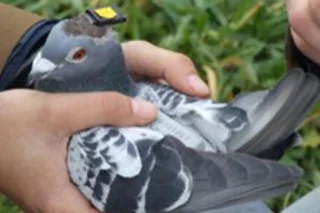To get inside the head of a homing pigeon as it navigates towards its roost, researchers turned a flock of pigeons into cutting-edge techno-birds. The scientists outfitted the birds with "neurologgers" consisting of an electroencephalograph (EEG) to read the bird's brain waves and a GPS tracker to record its location; by matching a bird's position to its brain activity, the researchers could determine the bird's reaction to the landscape below it. They found that, just like humans, the pigeons use visual landmarks in their navigation.
How homing pigeons find their way back to a starting point is not completely known. Studies have shown that the birds variously use the position of the Sun and the Earth’s magnetic field as a compass, and sense of smell and visual cues as navigation aids. But the use of visual cues has been difficult to study, because if a bird flies over a landmark ...














